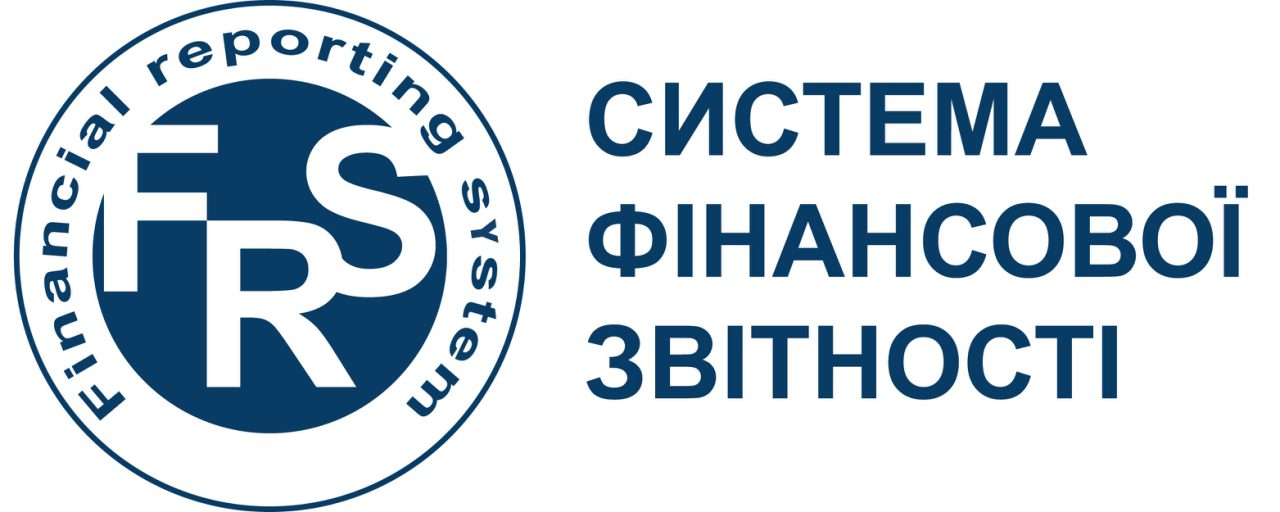PREPARATION AND SUBMISSION OF FINANCIALS IN UKRAINE
Let’s start with a comparison table, where I marked red the changes, which came into effect since 1 Jan 2018 and 1 Jan 2019 (regarding audits).
Download the table:
Company size
Earlier the companies were classified both by the number of employees and sales turnover, and there were only 2 sets of requirements – for large/midsize companies and for small/micro- enterprises. Now one needs to consider yet the assets value, and there are a bit more nuances. If previously any company with 51-250 employees and 10-50 mEURO of sales were a middle-size one, now it can be either a small or a large one, depending on assets value. Taking into account the changes in a marginal sales turnover values (0.7 – 8 – 40 mЕВРО in 2018 against 2 – 10 – 50 in 2017), also some small enterprises may be considered as middle-size. For some companies the requirements have been simplifed (e.g. for small and micro- financial companies), and for some – have become harder (for large and middle-size, as well as for permanent stablishments of non-residents).
Employees: Annual average number of personnel, including only the employees under labor law. Unlike in IFRS, the outstaffing/outsourcing and self-employed employees registered as private enterpreneurs are not included here. However, for IFRS such employees may count and be disclosed.
Sales turnover and assets: in EURO at average annual currency rate of the National Bank of Ukraine (Q1 2019: 31.02 – 2018: 32.14 – 2017: 31.64 – 2016: 31.76).
Company transfer from one category to another happens annually (for small and micro-enterprises: quarterly) immediately after the relevant thresholds have been met. However, the transfer to a lower category happens only in 2 years.
Group size and consolidated financials
If a company (irrespectively of its size) owns other companies (posessing over 50% sahres) or executes control over their governance bodies, it must submit a consolidated financial reporting for the group, but only if at least one criterion of a mid-size company is exceeded (over 50 employees, over 8 mEURO sales or assets over 4 mEURO) for the group as a whole. Earlier there was not requirement to submit consolidated financials in the absence of direct share (i.e. for controled only). Also there were no marginal criteria for a group, and such reporting had to be filed by all the companies owning majority shares.
Accounting function setup
According to the law, owners and managing executives may sign financials and tax reporting in person solely, without having an accountant onboard and not applying for external accounting services. Quite often such approach is followed in case such services are used, as the accounting service providers in Ukraine are not used to take full responsibility for the reporting, but only prepare it.
Earlier such approach was prohibited for public joint-stock companies, other securities issuers, as well as for fonancial institutions. Since 2018 a relief has been granted to micro- and small finance companies (except for credit unions and insurers). However, all large and middle-size companies, extracting industry enterprises, as well as permanent establishments of non-residents falling under large and midsize company criteria, may no longer avoid having an on-board accountant.
Starting from 2018 all public joint-stock companies listed on a stock-exchange, other securities issuers, extracting industry companies, banks, insurers, and all other large companies (except non-governmental pension funds and investment funds), must afford a designated Chief Accountant onboard plus at least one accountant within an accounting service.
Financials framework: NAS vs IFRS
Since 2019 it was expected a first adoption of IFRS for statutory submission purposes for all large non-financial companies, permanent establishments, whose parents already prepare IFRS statements, and extracting industry companies. Those companies may opt for a first IFRS period to start with: either Q1 of 2018 or Q1 of 2019. At the same time financial companies falling under criteria of a small and micro- enterprise may revert back to a local GAAP (National Accounting Standards, or NAS) reporting.
All other companies are encouraged to the earliest IFRS adoption, which might be quite a reasonable step. Not only because IFRS reporting grants more bebefits for a business in a long-run. Since 2018 there was omitted a requirement, that the NAS may not conradict the IFRS. Considering that the companies assess their income taxes based on the financials, existence of multiple ambiguities wthin the NAS, which have earlier been covered by IFRS treatments, may entaul additional tax risks. This may concern, for example, the revenue accounting (similar to IFRS 15), including accounting for customer rebates, loyalty programs, incomes and expenses of future periods related to conractual liabilities.
At IFRS first adoption companies had to inform the state statistics bodies and a tax office with a simple letter. Quite few paid attention to this requirement. However, as the local reporting itself included a mark “IFRS-based”, non-submission of such letter should not entail additional risks.
The current law requires preparation and submission of IFRS financials according to a version of IFRS standards published on the Ministry of Finance website. Since the Ministry published the standards in Ukrainian and with a significant delay, the available published standards might be outdated at a submission date. E.g. the IFRS effective at beginning of 2018 were published by the Ministry only 14th of June 2019, when all the submission deadlines have passed long ago. And those being such fundamental things as IFRS 9 and IFRS 15. Hence, the Ukranian companies adopting IFRS have a dilemma: either (1) ignore this requirement (against the law) and use the effective IFRS, or (2) prepare and submit the financial with a disclosure on some of the changes not yet being implemented under a risk of receving a modified auditors’ report.
IFRS-reporting forms
The companies adopting IFRS, irrespectively of their size, must submit the full IFRS package annually. The first package should include comparison data for 2 previous years (if using standard forms ##1-4: an additional financial position statement #1, an additional statement on equity #4 и additional notes related to them).
Under IFRS requirements such companies should file a full or a condensed full package each quarter. Actually, the tax office currently accept only 2 forms (balance sheet and income statement). Taking into account that the financials are considered an integral part of an income tax return, this circumstance represent a potential tax risk related to a potential formal denial of a tax return submission with respective consequences.
New rules supposed that the IFRS-reporting companies would file their reporting with a “single-window” of a State Securites Exchange Commission in electronic format and based on a unified international taxonomy. Some representatives of a Ministry of Finance treated it the way that the new rules may not be at all executed until the whole reporting process is established, which is not actually true.
The old NAS forms used for IFRS reporting may quite go under “taxonomy” definition of the law, hence until the new reporting system is fully established, the companies may submit new IFRS financial using the existing forms and in the existing way.
For an average trade and industrial company there are no significant deviation in the NAS forms ## 1-4 from IFRS requirement. IFRS 15 “Revenue from contracts with customers” introduced in 2018 requires few more additional reporting lines of contractual assets and liabilities. However, this might be technically resolved with existing “Work-in-progress”, “Other liabilitieis” and “Deferred income” lines with subsequent notes disclosure.
As of mid-June 2019 the State Securities Exchange Commision has approved a financial reporting taxonomy, introduced a new financial reporting filing system in a test mode, as well as sent out a request to all the companies to register in a new system. However, most likely, the actual reporting submission will only start after 2019 year-end. I will follow the news and update this article as soon as there is something new about that.
Management report
Starting from 2018 all middle-size and large companies, as well as extracting industry companies, public joint-stock companies and other securities issuers have to submit a new “Management report”, similar to international practices. However, so far the format requirements are quite far to being precise, and only limited to few recomendations of the Ministry of Finance. Most of companies consider and file such report merely in a formal way.
I will cover the topic of this report in a separate article. Here I would like to admit that this report is not legally a part of the financials, and its submission to a tax office cannot entail tax risks.
PUBLICATION OF FINANCIALS
All large and middle-size companies, exracting industry companies, as well as permanent establishments of non-residents considered as large or midsize companies, have to pubish their financials on their websites by 1 June 2019 (by 30 April for etxracting industry). Small and micro- financial companies have been granted a postponement until 1 June 2019.
The publication requirement with regard to 2018’s financials, despite coming into effect at 1 January 2019, flows up from the law itself. However the Ministry of Finance considered otherwise and issued a explanatory letter stating that the publication requirement would touch only 2019’s financials. According to Big4s, many companies follow this advice and postponed the publication, as well as related audits. At the same time such letter cannot overrule the law. The Audit Chamber of Ukraine also commented on this fact, insisting on the publication in its letter.
It is worth mentioning that the deadline definition “not later than before” also calls for a question. Following the common practice the deadline date should be considered as 31 May and 29 April inclusively (i.e. “before” the set date). In theory non-publishing financial together with a Management Report, may entail quite severe sanctions ($600-1800).
MANDATORY AUDIT
A mandatory audit must be passed by the companies, which are obliged to publish their financials. Therefore, except for those, who passed the mandatory audit earlier, starting from 2018 it must be passed by all middle-size and large companies, extracting industry companies and permanent establishments of non-residents falling within large and midsize company criteria.
Starting from 2019 the mandatory audit requirements have also changed as follows:
Auditor selection
1. A decision about a contract with an audit firm must be taken a company’s highest governing body level – a shareholders’ meeting or by a single owner (for a subsidiary). In the absence of a a shareholders’ meeting quorum, such decision may be taken by a Supervisory Board, and in its absence – by an Executive body (Board of Directors of a Managing Director).
2. Auditor selection must be conducted based on a public tender. Tender conditions and selection criteria must be published. There must be at least 2 tender finalists (i.e. there must be more than 2 participants) subject to a final choice. The tender terms must be presented to a Inspection of Audit Services Quality on demand.
3. The company must notify in an established format the regulatory state bodies, to which they file their financials, on the auditor selection. This rule currently applies for financial companies and listed public joint-stock companies. However, since 2019 it might be extended to all companies, submitting their financial through a “single window” of a State Securities Exchange Commission.
Audit commitee
The companies, which are subject to a mandatory audit (except for small and micro- financial companies), at the level of a the higher governing body must take a decision about an establishment of an audit committee. Large companies are recommended (but not required) to create a separate body. Once the audit committee is not created, there must be taken a decision to transfer its duties onto a Supervisory Board or onto a revisory committee (for large companies) or other controlling body (for midsize and financial companies). It is worth mentioning that large groups such decisions should apply at a parent company level in respect of all companies of the group.
Should the audit committee be created, it cannot include the representatives of governing bodies, and the majority of its members, including the Head, must not be the employees of the company. At least one of committee members must have an experience or a qualification in the area of accounting or audit.
The Audit Committee (or other respective body) fulfills the following:
- monitors and supervises the financial reporting preparation
- arranges and conducts the audit selection tender, prepares a report on tender completion for a higher body and recommend at least 2 tender finalists
- monitors the auditor independency, including the control of limits over provision of other (non-audit) services by the audit firm
- monitors the audit process, including receipt of the auditors’ report and an additional auditors’ report (a new special purpose-report of the auditor for internal purposs) for the Audit Committee, as well as controls the quality of the auditor’s work
- informs the highest governing body about the audit results
- monitors the internal control systems within the company (supervises the internal audits)
- manages the company risks (a risk management body and processes must be also present according to IFRS 9 with obligatory respective disclosures in financials).
It is worth mentioning that not every audit firm is allowed to perform the mandatory audit. There many criteria under which the firm might not be admitted in respect of a particular company, including the number of certified auditors on-board, the fee pro-rata the firm’s total revenue, including one for the last 5 years, as well as provision of other non-audit services to a particular client in the past. The audit firm may also be contracted only for a specified period, after which a new tender must be conducted. This is another topic, which I will not go deeper in here.






